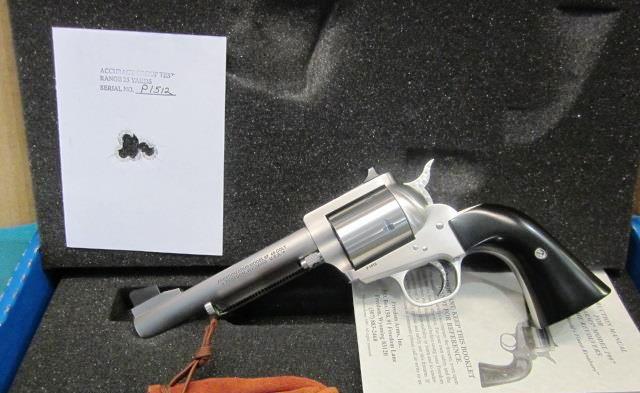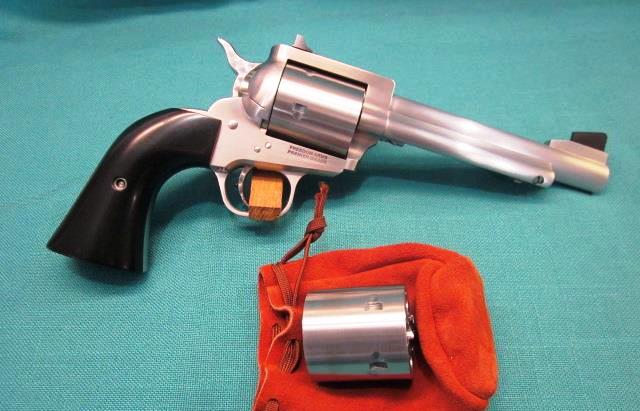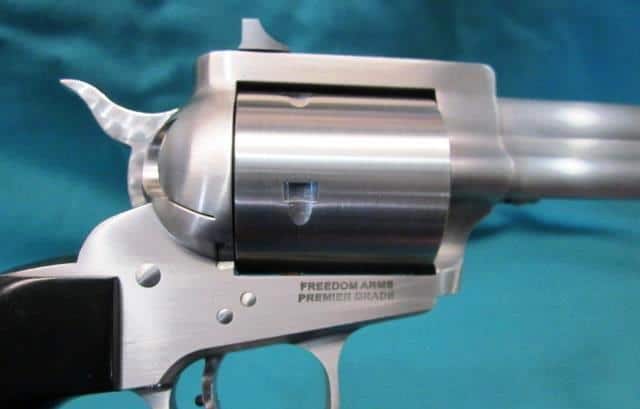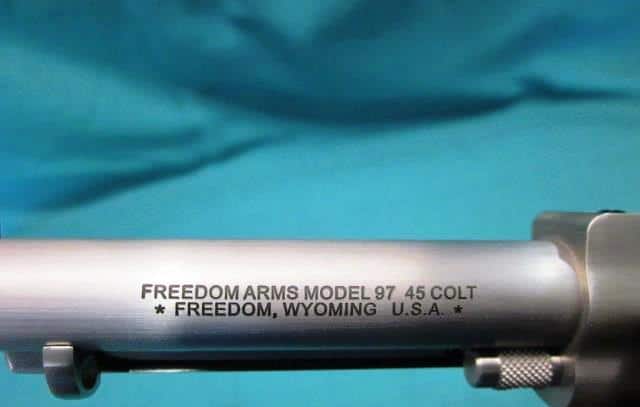
Ludwig Borovnik Drilling
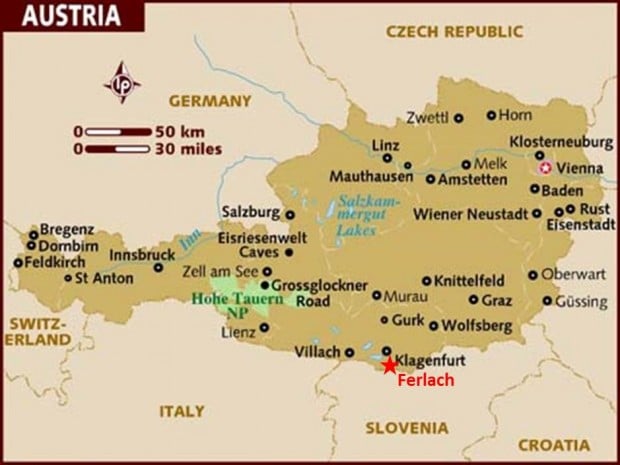
Ferlach, Austria -- A Cradle of Gun-making
In the very southernmost valley of Austria is located the town of Ferlach. About a dozen gun-making companies there craft some of the finest shotguns and rifles in the world. This is the story of one of them and a unique firearm he produced.
Herr Ludwig Borovnik, who was born in 1824 and the mayor of Ferlach, turned his passion into a career and set up business as an independent gunsmith in Ferlach, Austria in 1848. The company that he founded was later taken over by his son, Ludwig Borovnik II; it remained a small, family-run enterprise well into the 1930s.
On April 14, 1942 the family fortunes were undone when all members of the family were deported to Germany on cattle wagons by German authorities. After the end of the war, the family returned to Carinthia and found it in ruins. Just a few years later, Ludwig Borovnik II died of ill health that had never improved since his return from Germany. Ludwig Borovnik III, who had been born in 1925, assumed the role of head of the family and rebuilt the business from scratch.
In the 1950s, Ludwig Borovnik III made use of his language skills to import and sell timber from Yugoslavia. Having got the business off to a good start, he was the first wood-seller in Ferlach to start trading stock wood and rose to become one of Europe’s largest walnut wood traders. Much of the finest examples of the wood found their way to his gun shop as well.
In 1960, Ludwig Borovnik III first met passionate hunter Helmut Horten and his wife Heidi. Their relationship blossomed into a friendship and business partnership that would last 25 years. A great many hunting trips to Yugoslavia were organized, facilitated by Ludwig Borovnik III’s excellent relations with Marshal Josep Broz Tito, President of Yugoslavia from the end of World War II until 1980.
Ludwig Borovnik IV assumed leadership of the business in 1986. In what was maybe the proudest business transaction of his career, he received Juan Carlos de Borbon, King of Spain, in his showroom. The King personally inspected the guns that had been ordered for him and was delighted with the manufacturing detail and precise handiwork of the weapons. U.S. President George Herbert Walker Bush also ordered a firearm from the company.
Ludwig Borovnik IV headed the company proudly until 2004, when Ludwig Borovnik Jr. took over the responsibilities.
Crafting a Borovnik rifle requires extreme precision. After four years at a special technical school, their gunsmiths also have to undergo more training supervised by the firm’s master gun-maker. As a Borovnik rifle is 90% crafted by hand, without the use of any machines, it can take up to two years to complete. The client is involved at every stage in the manufacturing process from gun-making and stock-making to engraving. Personal wishes can therefore be taken into consideration at any time, and thus each of these precision guns becomes a unique masterpiece.
Expertise handed down through the generations turned the old trade of making war weaponry into the distinctive craftsmanship that has since made Ferlach’s gun-makers world famous. In the hands of a master craftsman each stroke of the file goes towards giving the gun its own personality. Expertise, experience and a love of the profession are however our master gun-makers’ most valuable tools. The engraving is the gun’s face. It gives it beauty and personality. Often it tells of hunting, often of fauns, goblins and fairies and sometimes also of love. Usually however it reflects the owner’s soul. In the highest-end guns, Borovnik engravers invest up to 3,500 hours of work in cutting and chiseling their masterpiece in the steel. The ambition to create a perfect work of art is the constant driving force for Borovnik’s world-famous engravers.
Years of experience and the art of reading the wood are the basic requirements for becoming a master stock-maker. And only the best of them are allowed to work with our exquisite stock woods. Each stock is selected personally by the client and custom finished to fit. Borovnik holds one of the largest and most exclusive stores of stock wood in Europe. All the wood of the weapon’s stock is dried naturally for at least 20 years before use and features highest quality and breathtaking beauty.
Many people mistakenly believe that Ferlach is a trademark – it is not. Rather, Ferlach is a small village where a gun guild was started as early as 1558. Ferlach (in Slovene: Borovlje) is the southernmost town in Austria, about 17 km south of the Carinthian capital Klagenfurt. It is situated in the Rosental Valley of the Drava River, at the base of the northern slope of the Karawanken mountain range. Just south of these mountains is the country of Slovenia. Thanks to the nearby natural resources of iron and timber, water from rivers cascading down the Karawanken mountains and an already well-established workforce of skilled iron- and metalworkers, a weapon industry evolved that would soon become world famous. Nowhere else on earth is such a collection of gun-smithing talent as there is in this little town in southern Austria. Neither is there anything that compares to the gun-smithing school (Höhere Technische Bundeslehranstalt Ferlach) where a young man or woman at the age of 15 to 16 can enter a four-year course in firearm design that makes it possible to build a rifle from scratch with hand tools and graduate with a four-year degree, or five-year course in engineering. Upon completion of the four- or five- year course a graduate can build a rifle, any rifle, be it sidelock, boxlock, double rifle, over-and-under, drilling, bolt-action, side-by-side – you name it – with any stock design and then engrave it or provide inlays of gold or silver. If any gunsmith in the U.S. can compete with the average graduate of Ferlach’s gun-smithing school, there is a good chance he graduated from Ferlach.
The history of the town is depicted in its coat of arms: it features a tree, bee cone, two crossed silver nails and a rifle. Since the 15th century, Ferlach was known for its firearms manufacturers, the main armorer of the Habsburg Monarchy.
In the 1500s, it was absolutely necessary that all the people involved in fabricating a firearm were located together in close proximity. This enabled the barrel maker, the stock maker, and the lock mechanism maker to work together closely to ensure that everyone was performing their task(s) correctly, effectively and efficiently. In 1558, Holy Roman Emperor Ferdinand I (who was also the King of Bohemia and the King of Hungary and Croatia) assigned 100 gunsmiths from the Habsburg Netherlands to Ferlach for the purpose of producing arms. According to legend, two Schaschl brothers left Liege, Belgium and were the first to settle in Ferlach to start a gun factory, which was in operation until 1818. During the 30-Year-War (1618 – 1648) arms production in Ferlach went through its first “boom” and capacity expanded. Weapons from Ferlach soon became renowned throughout Europe.
As the individual skills became better and more refined, more and more firearms were manufactured. Eventually, individual gunsmiths began to put their name on the barrel or frame of those guns which they had either manufactured solely or with the help of their fellow Ferlach craftsmen. Since all Ferlach firearms are essentially hand-made per individual special order, very few are exactly alike. In the past, the gunsmiths of Ferlach have produced almost every type of shoulder arm imaginable, including such modern weapons as superposed and juxtaposed rifles and shotguns, hammerless drillings, repeating rifles, 3 barrel rifles, combination guns, four-barrel combination guns (called vierlings), hammer guns of every type, etc. Some of these specimens represent the highest refinement in the gun-makers trade.
In 1946, there were 56 gunsmith companies in Ferlach (at one time there had been over 100), but the numbers dropped continuously. In 1989 only 16 gunsmiths remained and in 2008 only seven active gunsmiths continued producing guns, although this number has increased slightly in the last few years. Most guns manufactured in Ferlach today are by individual special order with a wide range of calibers/gauges and other special features and options. As of this writing, these existing gunsmiths in alphabetical order appear to be: Ludwig Borovnik (1848), Johann Fanzoj (1790), Wilfried Glanznig, Josef Hambrusch (the oldest firm beginning in 1752), Karl Hauptmann, Christian Hausmann, Gottfried Juch, Josef Just, Jakob Koschat, Peter Michelitsch, Johann & Walter Outschar and Herbert Scheiring. Legendary firms that are no longer in business include Josef Winkler, Franz Sodia and Johann Sigott. Top engravers who have lived in Ferlach and who work on individual pieces for the gun-makers have included such names as Mack, Krondorfer, Orou, Schaschle, Singer, Maurer, Widmann, Stogner, de Florian, Plucher and Oblitschnig.
Each of the master gun-makers does some things a little differently from the other and they might also offer some things, which the other gun-makers do not. All use Böhler Antinit, Böhler Blitz and Böhler Super Blitz steel, which are so strong that they allow the thickness of the barrels to be reduced, thus reducing the final weight of the weapon. The gun-makers also make their own actions (with the exception of bolt-action rifles). They tend to be a little secretive about some of their processes and methods of manufacture, even from each other. A customer, who decides to visit Ferlach to have a gun made, should allow a week in the village to visit every gun-maker, if the client has not already picked out a gun-maker.
Ferlach received town privileges in 1930 and today remains a center for the production of hunting rifles. Currently the town has 7,377 inhabitants. The Ferlach Guild (Genossenschaft) represented most of Ferlach’s gun-makers until it was dissolved in 2004. Current prices reportedly range from $25,000 to $500,000 per piece, which take six to ten months to produce; at the high end, production can take two years. Only Beretta has been making guns longer than Ferlach and is still in business. The gun-making industry brings in $8,500,000 to $10,000,000 to the town annually.
One of the classic combinations of weapon made in Ferlach is of two shotgun barrels arranged on top of a rifle barrel, known as a “drilling” gun. The drilling is not intended for target shooters, but predominantly used for high-seat hunting, driven hunts and game bird shoots, making it a gun that fulfils all expectations and lives up to pretty much any hunting situation.
The example we will review today is a Ludwig Borovnik 20-gauge/.222 Remington Magnum drilling, serial number 40 3017, was crafted in Ferlach, Austria in 1969. The number 40 was the sole proprietorship number for the firm of Ludwig Borovnik and is found on their arms. The weapon has side-by-side 24¼” barrels (full/modified chokes for the shotgun barrels.) Featuring double triggers, it has a 14 ⅝” length of pull; overall length of the weapon is 41 ½”. Without the scope, the weapon weighs 6 pounds and 12.8 ounces. Shotgun barrels are marked Böhler Blitz Stahl and rifle barrel is marked Böhler Blitz Stahl Spezial G55. The rifle barrel is also marked Ludwig Borovnik-Ferlach. The weapon also has a marking of 128.69 indicating that it was the 128th weapon to be proofed in 1969 by the Ferlach Genossenschaft to ensure its safety and quality control. The weapon has two triggers with a Blitz Action – a design where the moving parts of a break-open gun’s action are mounted to the trigger plate. The receiver locking system is a Greener Crossbolt, a tapered round bar, operated by the opening lever, passing transversely through the standing breech and a matching hole in a rib extension; to strengthen the lock-up.
When the drilling is set for the shotgun mode (Sch) on the top switch, the front trigger fires the right shotgun barrel and the rear trigger fires the left. The lower butt-stock of the weapon has a special compartment that holds five .222 Remington Magnum rifle rounds under a sterling silver access door. The coin finished drilling is engraved on the right side of the receiver with two deer (male and female) in a forest. On the left side is a pair of ducks over a pond. The pistol grip cap features a likeness of the Auerhahn, the largest member of the grouse family and an endangered species in Germany and Austria. Other areas of the receiver have floral engravings. Today, Ludwig Borovnik’s shop in Ferlach is: Ludwig Borovnik KG, Präzisionsjagdwaffen Gewehrschäfte Aller Art, at Bahnhofstrasse 7.
The weapon has a Pachmayr Decelerator Recoil Pad that was probably installed after the weapon was received by Flaig’s Custom Guns in 1970. Flaig’s (just north of Pittsburg in Millvale, Pennsylvania) commissioned Ludwig Borovnik to produce several drillings and combination over-under shotgun/rifles in American calibers for export, although the numbers were small considering the time it took the small Borovnik shop to make it each weapon. In this era, Borovnik made 168 total weapons per year. To date, this 20-gauge/.222 Remington Magnum combination by Borovnik is the sole example to appear on the secondary market and may be the only weapon Borovnik ever made in this caliber pairing, given that most of his weapons were sold in Europe and these are not popular European calibers. This weapon has Flaig’s motif engraved on the trigger guard. Charles Flaig died in the early 1990s and his store closed soon afterward. During this era, 98% of few Borovnik arms imported to the United States went through his firm. A rear sight rises into the “up” position, when the tang selector is moved to the rifle (K) setting. In this setting, the front trigger fires the rifle.
The caliber .222 Remington Magnum is now out of standard production, the last rounds made in mass in 1998, although selected manufacturers make limited numbers every few years. The caliber is just slightly more powerful than the .223 (50 to 100 feet per second faster at the muzzle.)
The weapon has a Zeiss telescopic sight. On November 17, 1846, 30-year-old mechanic Carl Zeiss opened a workshop and a small store in Jena’s Neugasse 7. In 1892, Carl Zeiss built the first telescopic sight (based on Beaulieu-Marconnay design) for sniper rifles and machine guns. Zeiss designed the C-series for the American hunter with integral objective and ocular bells and an integral adjustment turret. The one-piece construction allows perfect lens alignment, micro-precise adjustments and structural integrity, with quick focusing, rubber armoring at the eyepiece, T-Star multi-layer coating and parallax setting (free at 100 yards.)
A Zeiss Diavari-C 1.5-4.5x 18mm Rifle Scope serial number 204031, manufactured in 1987 in Wetzlar/West Germany, is mounted on the drilling using special German claw mounts manufactured by EAW – Ernst Apel GmbH, Würzburg/Germany, made in their factory at the village of Gerbrunn – ensure the scope is automatically bore-sighted, whenever it is mounted – which eliminates the need to fire a confirmation shot in the field. It is a variable power from 1.5-magnification to 4.5-magnification. Eye relief is 3.54.” When set on 1.5-magnification, the scope has a field of view of 72 feet at a range of 100 yards. The length of the scope is 12.28.” The weight of the scope, which has the older steel tube instead of aluminum, is 16 ounces without the claw rings. With the scope mounted, the weapon weighs 8 pounds and 12.8 ounces.
An Austrian hunter would use a weapon of this nature to hunt birds with the shotgun barrels and perhaps a fox or large hare with the rifle. In the United States, with our different hunting laws, and depending on the state, the weapon could be used for turkey or pheasant with success.


